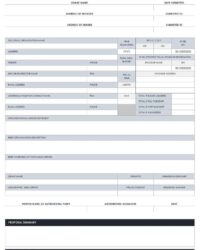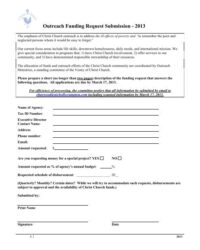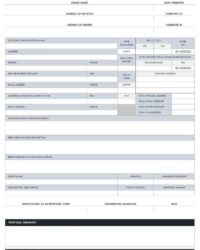Using such a structure offers several advantages. It streamlines the application process, saving time and effort. A well-designed framework ensures all essential information is included, increasing the likelihood of a successful outcome. Moreover, it promotes clarity and professionalism, reflecting positively on the applicant organization.
This structured approach to funding requests is explored further in the following sections, covering best practices for completion, common pitfalls to avoid, and examples of successful submissions.
Key Components of a Small Grant Application Structure
Effective applications for small-scale funding typically incorporate several key components to ensure clarity, completeness, and a compelling narrative.
1. Executive Summary: A concise overview of the project, highlighting its purpose, key activities, and expected outcomes. This section provides a snapshot of the entire proposal.
2. Need Statement: A clear articulation of the problem or opportunity the project addresses. This section establishes the rationale for funding.
3. Project Description: A detailed explanation of project activities, including timelines, methodologies, and key personnel. This section outlines the “how” of the project.
4. Budget: A comprehensive breakdown of project costs, demonstrating responsible resource allocation. This section provides financial transparency.
5. Evaluation Plan: A description of how project success will be measured. This section demonstrates accountability and impact.
6. Organizational Background: Information about the applicant organization, highlighting relevant experience and capacity. This section establishes credibility and trustworthiness.
7. Sustainability Plan: An outline of strategies to maintain project outcomes beyond the grant period. This section demonstrates long-term vision.
These components work together to create a cohesive and persuasive argument for funding, increasing the likelihood of a successful application.
How to Create a Concise Funding Request Structure
Developing a standardized structure for small grant applications ensures consistency and efficiency in the request process. The following steps outline how to create such a template.
1: Define the Purpose: Clearly articulate the specific goals the template aims to achieve. This focuses the design process and ensures alignment with funding priorities.
2: Identify Essential Components: Determine the necessary information required from applicants. This typically includes project summaries, budgets, timelines, and organizational details.
3: Develop Clear Instructions: Provide concise and unambiguous guidance for completing each section. This minimizes confusion and ensures consistent information gathering.
4: Design a User-Friendly Format: Create a visually appealing and easy-to-navigate layout. This enhances readability and encourages thorough completion.
5: Test and Refine: Pilot test the template with potential applicants to gather feedback and identify areas for improvement. This ensures practicality and usability.
6: Disseminate and Train: Distribute the finalized template widely and provide training on its use. This promotes consistent application and streamlines the review process.
A well-designed structure, incorporating these steps, facilitates efficient and effective grant application procedures, benefiting both applicants and reviewers.
Standardized structures for requesting small-scale funding offer significant advantages to both applicants and grant providers. A well-designed framework ensures completeness and consistency in submissions, simplifying the review process and increasing the likelihood of equitable funding decisions. Such templates promote clarity, efficiency, and transparency, ultimately contributing to a more streamlined and effective grant-making process.
Leveraging these structured approaches empowers organizations to pursue funding opportunities strategically, maximizing their potential for success and contributing to positive social impact. The adoption of such frameworks represents a crucial step towards fostering a more accessible and equitable funding landscape, empowering organizations to pursue impactful projects and achieve their missions.


